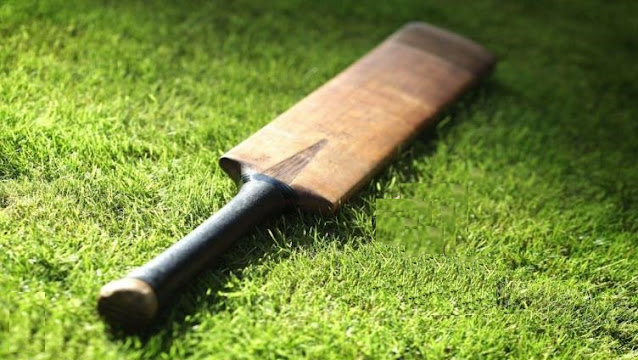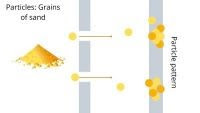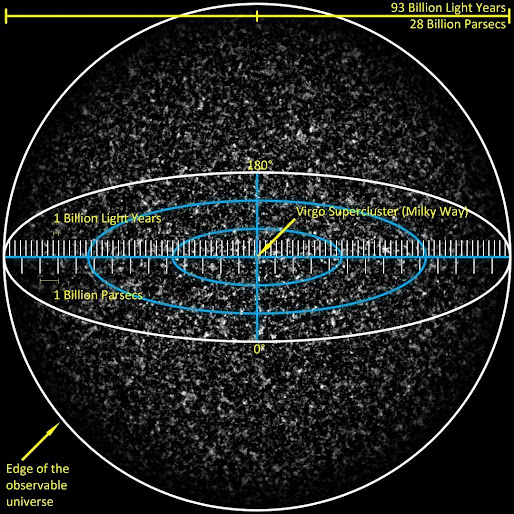written and posted by members of Lancashire Dead Good Poets' Society
Friday 19 April 2024
Wednesday 17 April 2024
Weird Physics
Probably a Poem about Quantum Mechanics
In Classical Mechanics
a reader is presented
with words forming a pattern
on a single page
and by following the lines
formed by these words
will confidently expect
that at the end of the last line
there will be a verse
II
In Quantum Mechanics
a reader is invited
to close their eyes
as words are printed
on a single page
then when told to look
will see a familiar pattern
and by following the lines
will confidently expect
that at the end of the last line
there will be a verse
III
In Quantum Mechanics
a reader is encouraged
to keep their eyes open
and observe a word
while it is being printed
such encouragement may be needed
as the act of interacting
will lead to the collapse
of the verse pattern
and thus a poem may
or may not occur
we just don’t know
First published in The Journal, August 2019
Tuesday 16 April 2024
Weird - In My Crazy Dreams
‘Venus is the only planet that spins clockwise.’ Is that weird? As long as it doesn’t knock me over, I don’t care. I don’t take much notice of planets, apart from what the National Curriculum sets out to teach children, but I don’t think Venus is alone there. It might be Uranus that also spins clockwise, something to do with toppling over on its axis. No? Well, that will be just me on my statin induced weird dreams, then.
I blame the statins, like I do for everything else, but it
could be the chocolate. Just try Cadbury’s ‘Darkmilk’, though maybe not too
much before bed. I’m not having nightmares, thank goodness. My dreams are vivid
and just weird, sending me into odd situations, like trying to figure something
out at work in a dental surgery. I retired nearly three years ago, and I didn’t
work in surgery, I was on reception. I dream about my family, including those
who have passed away. Years ago, when I was having chemo, I regularly dreamt of
going into a room full of people. It was welcoming and cosy. I was greeted with
affection. This was where I belonged. The people were my family, my passed away
family. There was my mother, young and pretty as I remembered her before she
was ill, and my grandparents with aunts who were special to me, taking me into
their fold. The dream was always much the same and with the same missing
person. My dad wasn’t there. It upset me to think that if I died, my dad wasn’t
waiting for me. It was disturbing, to say the least, as if there wasn’t already
enough going on. It was just a very weird, recurring dream brought on by the
chemicals that helped to save my life. As I recovered, I stopped dreaming so much and stopped worrying.
Imagine waking up in a spotlessly clean and tidy bedroom,
bathed in sunlight filtering through tilted blinds. Outside, the neighbour who
never speaks to anyone, smiles and calls out a cheerful ‘good morning’. On the
main road, a few cars go by, carefully observing the twenty mile per hour speed
limit and the pavement slabs are even with no trip hazards.
This would be too weird for words – or I had died and gone
to Heaven.
Meet the Weird-Bird
Birds are flyin’south for winter.Here’s the Weird-Bird headin’ north,
Wings a-flappin’, beak a-chatterin’,
Cold head bobbin’ back ‘n’ forth.
He says, “It’s not that I like ice
Or freezin’winds and snowy ground.
It’s just sometimes it’s kind of nice
To be the only bird in town.
Shel Silverstein (1930 – 1999)
Thanks for reading, Pam x
Monday 15 April 2024
Weird: The strange, unusual and surreal
Michel mentions that if one takes surrealist imagery/poetry at face value, that the creative works appear to be weird and random. He also puts forward how these types of artworks resist simple meanings and concrete interpretations. The Surrealists he says:
Thus, it seems that the Surrealists’ audience back in the day and perhaps today as well, had issues with the works because of their weirdness and non-depiction of a known reality - a fear of the weird, Fear of the Surreal, as Michel’s blog post title is called. I got lost in further reading about the Surrealists for this article, definite food for thought, however I became distracted as I began to reflect on my own work, my own weirdness and creative development.
1)
what moon bright star
giraffe feet clumsy
sink into soil a sandpit
a dark hole swallow
whole and grains like
timer oh the flowers arched
droop stems petals are
gone as dust flies into the
wind my eyes pop out roll
along the hill on a journey beyond
the horizon
2)
homeward bound dogs run past
the prairie dogs on grass by
trees alone she stands among
men who circle the feet with
dogs barking cars racing down the
long straight road to nowhere
somewhere another she lights a
fire to keep warm opening a tin
of beans
3)
onto the shore seaweed slime
open eyes diamonds shine
red or white at night and day
squint moon squint
can you see through black abyss
the owl fluffs its wings
brown speckled feathers
one is lost floating free
to land in moss and fungi
ants crawl spiders weave
squirrels climb the cat stalks
rodents hide
Thank you for reading,
Sources
Alexandrian, S. 1989. Surrealist Art. 2nd Edition. London: Thames and Hudson Ltd Cambridge Dictionary, 2024
https://dictionary.cambridge.org/dictionary/english/weird Accessed 14 April
Language is a virus, 2024. Automatic Writing.
https://www.languageisavirus.com/creative-writing-techniques/automatic-writing.php
Accessed 14 April
Michel, L., 2023. Fear of the Surreal.
https://countercraft.substack.com/p/fear-of-the-surreal Accessed 15 April 2024
Sunday 14 April 2024
Stars
 |
| False colour image of Proxima Centauri taken from the Hubble Space Telescope 2013. The bright lines are diffraction spikes. |
To Proxima Centauri
We are travelling, we are
on our way to a new galaxy,
a new dawn, a new day,
past conglomerations of
constellations, old stars
viewed from new perspectives
as we become interstellar
detectives, with curiosity and
resolve we will watch the
new solar systems evolve
before our eyes and record
and collect data for those who
follow us later and follow us
they will to make history and
resolve the mysteries of life
as they unfurl in the
expectations and revelations of
distant stars and different worlds.
Thanks for reading the blog and the poem. Please leave a comment as they are all appreciated.
Dermot Moroney 2024
Saturday 13 April 2024
Photographing The Stars
Justine (not her real name) was a student in my A-level English class. She didn't go a bundle on D.H. Lawrence ('The Rainbow') or Thackeray ('Vanity Fair'). I wondered if that was because she was Canadian, too culturally removed. Her father was on assignment in London working for some record company (EMI possibly). It did occur to me that maybe those novels were just too long for her transatlantic attention span! But she didn't much like William Blake either ('Songs of Innocence and Experience'), couldn't accept that the poet saw and conversed with angels. And as for Shakespeare...
In fact she didn't have a lot of time for English Literature, period (as she would have put it). Art was what she did have an enthusiasm for, her main subject. I think economics was the third one but I'm not sure. Her attendance and attention were sporadic at best over the course of eighteen months. She came across as a rich girl doing us a favour by filling in time in class, when what she really wanted to be doing was photographing the stars.
 |
| expensive camera gear |
To move this story on, Justine's father apparently decided to break his daughter's cycle of rejections by arranging for her to be the official photographer for a newly signed band on the label he worked for. She was to go on tour with Slowly Boiling Frog, document their shows and offstage antics and shoot the cover for their debut long-player. This was, conveniently or otherwise, in the Easter holidays just months before A-level exams.
 |
| Slowly Boiling Frog |
Wednesday 10 April 2024
Stars
With just as much validity, you can step outside on a clear night, choose any star you like, and name it for anyone you want. For free.
There isn’t one single thing about it that you couldn’t do yourself. Pick a star at random, name it, Google a star map to it, print that out on nice paper, mount it in a nice frame with a nice matte board.
By day you cannot see the sky
For it is up so very high.
You look and look, but it's so blue
That you can never see right through.
But when night comes it is quite plain,
And all the stars are there again.
They seem just like old friends to me,
I've known them all my life you see.
There is the dipper first, and there
Is Cassiopeia in her chair,
Orion's belt, the Milky Way,
And lots I know but cannot say.
One group looks like a swarm of bees,
Papa says they're the Pleiades;
But I think they must be the toy
Of some nice little angel boy.
Perhaps his jackstones which to-day
He has forgot to put away,
And left them lying on the sky
Where he will find them bye and bye.
I wish he'd come and play with me.
We'd have such fun, for it would be
A most unusual thing for boys
To feel that they had stars for toys!
Tuesday 9 April 2024
Furthest, Fairest Things
each his own, the longer known the more alone,
wrapt in emphatic fire roaring out to a black flue.
Basil Bunting, 'Briggflatts'
When I was was a kid, somebody bought me The Observer's Book of Astronomy, one of many books written on the subject by the late Patrick Moore. I was intrigued by the pictures of constellations, although I must admit I spent more time looking at the book than into the night sky. More than once, I must've thought it would be interesting to be an astronomer, but I was lousy at maths and just don't have the sort of mind that's good at remembering long lists of names (I tried a few times to memorise the main features on the moon, but they never stuck).
Then is Now. The star you steer by is gone,
its tremulous thread spun in the hurricane
spider floss on my cheek
Ibid.
I wrote this poem below a few years ago. It was first published in The Passionate Transitory magazine which, sadly, though passionate in its promotion of poetry, itself turned out to be transitory. I think, when I wrote it, Pluto was still a planet. Don't get me going on that.
Something's about to happen. I'm not sure what.
I've watched for long enough and, yes, I get
Impatient, as the months slip by. And yet
This is important. In a way, I'm not.
Earth, erratic, crosses the ecliptic;
By day, the sun's scarce bigger than a star:
It makes you realise just how small we are.
Will I get home? I must be realistic.
Gravity's low. Perhaps my bones grow thin.
I jog the corridors, try to keep fit,
But face the fact (there's no escaping it)
I have become this waiting game I'm in.
One day, it'll happen, I've no doubt.
Exactly when, I don't know. I'll find out.
Dominic Rivron
Monday 8 April 2024
Stars
For wel swithë sore ben he:
The on is that Ich shal hennë,
That other that Ich not whennë,
The thriddë is my mestë carë,
That Ich not whider Ich shal farë.
 |
| My grandmother's house |
At the myriad of flickering stars,
Our world circles but one average star.
We cannot comprehend,
We are an infinitesimal speck of life.
You and I are here,
Our existence formed by the dust of atoms
In the furnace of a dying star.
That is everything.
One day we too will die,
In the universe of time, becoming our star’s dust.










Clock.jpg)
%20BLOG%20Photo%208%20copy.jpg)
%20BLOG%20PHOTO%204%20copy.jpg)










